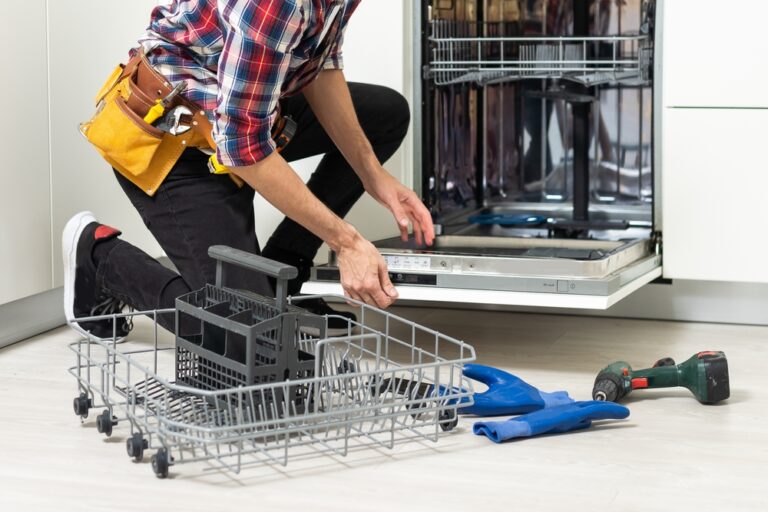What is considered ‘fair wear and tear’ can be a divisive subject between landlords and tenants, sometimes resulting in disputes.
“Luckily, fair wear and tear on a rental property is not as subjective as it may initially seem,” says Whitegates Managing Director Rob Smith.
“There are lots of guidelines for both landlords and tenants to help them understand what is expected of them when it comes to property maintenance, while certain tasks may also be included in tenancy agreements.
“If you are a tenant or landlord and you’re unsure of what you’re responsible for, speak to your property agent or refer to reputable resources on places like the government website or the citizens advice bureau.”
In this guide, we explain everything you need to know about acceptable wear and tear and outline the differences between wear and tear and damage.
What is fair wear and tear?
The definition of fair wear and tear refers to the deterioration of an item over time and due to normal use.
Fair wear and tear is used when looking at the condition of a rental property at the end of a tenancy, taking into account the property’s condition will become worse over time as a result of being used every day.
What is the difference between wear and tear and damage?
The main difference between fair wear and tear and damage is wear and tear occurs naturally over time whereas damage occurs through neglect.
Fair wear and tear and tenancy deposits
Understanding rules on fair wear and tear is key when deciding whether to make deposit deductions at the end of a tenancy.
Tenants can’t be held responsible for damage to items that occurs through normal use and over time.
Essentially, tenants can’t be charged for anything that happens simply through them living in your rental property.
Examples of fair wear and tear
Examples of fair wear and tear in your rental property might include:
- A worn or scuffed carpet
- Scuff marks on walls
- Faded curtains or furnishings
- Worn property keys
Examples of damage
Damage occurs through negligence or recklessness, and this can usually be charged for through a deposit deduction. Examples of damage include:
- A broken toilet seat
- A smashed mirror
- Holes or dents in walls
- Burn marks on carpets or flooring
What to consider when assessing fair wear and tear
When assessing whether something is damage or fair wear and tear, you should also consider:
1. How long your tenant has lived in the property
The longer your tenant has been in your property, the more severe wear and tear is likely to be.
2. How many tenants are living in your property
Four tenants living in your property for two years will cause more wear and tear than one tenant living there for the same amount of time.
3. The condition of your property when the tenant moved in
Consider the condition of your property when your tenant moved in. For example, if your carpets were worn when the tenant moved in, you can’t charge them for replacements at the end of their tenancy.
The importance of an inventory
What is classed as fair wear and tear by one person could be considered ‘damage’ by another.
So, having a detailed inventory in place is hugely important to avoid disputes with your tenants.
Recording a property’s condition through an inventory at the start of a tenancy means you’ll be able to compare that document with the property’s condition at the end of the agreement.
An inventory should include:
- A list of all fixtures, fittings, and furnishings supplied with the property
- Details on the condition of all fixtures, fittings, and furnishings
- Details on the condition of the property’s décor, including paintwork, walls, and flooring
What is the wear and tear allowance and Replacement Relief?
The wear and tear allowance meant landlords renting out fully furnished properties could claim a 10% allowance each year on replacing moveable items like beds, sofas, tables, and chairs.
Even if a landlord didn’t replace anything, they could still claim the allowance until it was scrapped in 2016.
Now, landlords must claim Replacement Relief, which covers the cost of a direct, like-for-like replacement.
That means if you replace a bed that has reached the end of its useable life and it originally cost you £500, you can claim £500 towards the cost of its replacement.
Items you can claim Replacement Relief on include:
- Beds
- Sofas
- Carpets
- Kitchen crockery or cutlery
- Curtains
- Appliances like fridge freezers, washing machines, and dishwashers
- Boilers
- Electrical items like TVs
If you spend money disposing of an old item, you can also claim this.
But if you sell an old item before replacing it, this money must be deducted when calculating Replacement Relief.
Who is responsible for maintenance of a rental property?
You’re responsible for maintaining your rental property’s:
- Structure and exterior
- Sanitary fittings including baths, basins, sinks, showers, pipes, and drains
- Heating and hot water systems
- Gas appliances and ventilation
- Electrical installations, including wiring
Your tenant is responsible for:
- Minor maintenance tasks like replacing bulbs or smoke alarm batteries
- Keeping the property well ventilated to avoid condensation and mould
- Reporting any repair requests to you
- Looking after furnishings and décor and not damaging anything
- Keeping the property clean
- Disposing of rubbish in the correct way
How long do landlords have to fix problems?
Landlords are responsible for major repair work at a rental property and must carry out repairs within a ‘reasonable amount of time’.
Those timescales depend on the seriousness of the issue – for example, a broken boiler in winter should be repaired or replaced as quickly as possible.
How much should you save for maintenance on a rental property?
It’s estimated that the average rental property requires 28% of its annual rental income to be adequately maintained.
Having a maintenance fund and a regular schedule of work planned at the start of each new tenancy is key to managing your money and keeping your property in good condition.
Checkatrade recommends putting aside 1% of your rental property’s value each year to cover repairs and emergencies.
Are maintenance fees tax deductible on rental property?
Money you spend on maintaining and repairing your rental property can be deducted from your taxable rental profit.
You can’t claim income tax relief for any improvements you make, for example replacing a kitchen or adding an extension, but improvements may be deductible from any capital gains tax bill should you sell your rental property in the future.
Who is responsible for tree maintenance in a rental property?
Unless stated in a tenancy agreement, landlords are responsible for tree maintenance at a rental property, including ensuring that any large trees are safe.
However, tenants are generally expected to carry out general garden maintenance, including weeding and mowing any lawns.
Further reading…
- Everything you need to know about the Renters Reform Bill
- The risk you’re taking if you’re an uninsured landlord
- All the costs you need to know about as a landlord
Looking to let your property? Check out what we offer:




